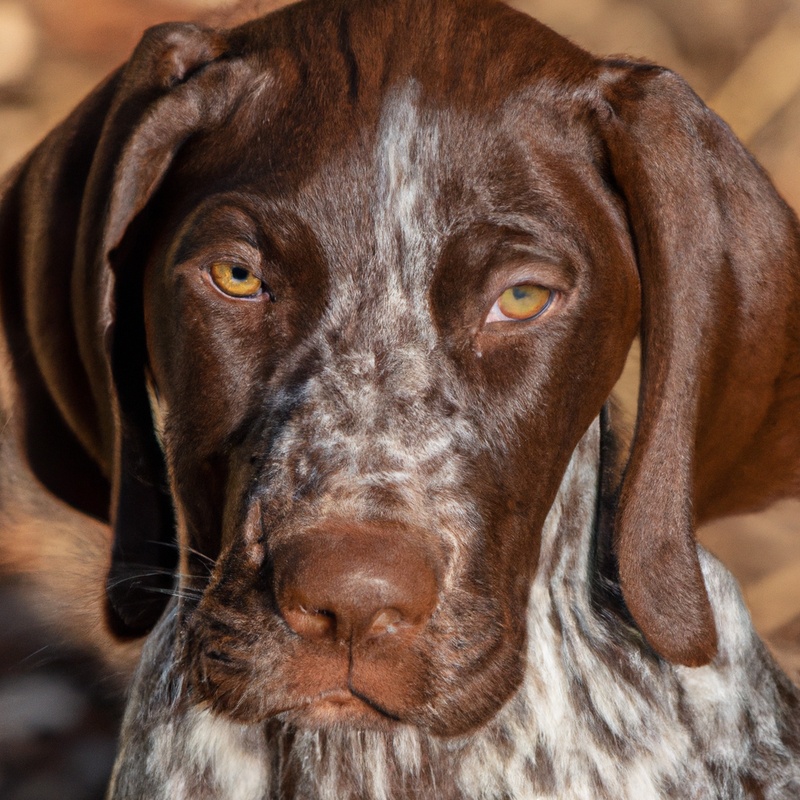How Do I Prevent My German Shorthaired Pointer From Chasing Cars?
Key Takeaways:
- Train your German Shorthaired Pointer using positive reinforcement to redirect their focus away from cars.
- Establish clear boundaries and use leash training to prevent your dog from chasing cars.
- Provide mental and physical stimulation to keep your German Shorthaired Pointer engaged and less likely to chase cars.
- Seek professional help from a dog behaviorist or trainer if your German Shorthaired Pointer continues to chase cars despite preventive measures.
Imagine the thrill of watching your German Shorthaired Pointer sprint across a meadow, chasing the wind with sheer joy. Now, picture that same joy turning into panic as your beloved canine darts after passing cars.
You’re not alone in this concern – countless GSP owners grapple with the challenge of car chasing.
But fear not, for I’m here to share practical solutions that will help you keep your furry friend safe and sound. In this article, we’ll explore the instinctual nature of German Shorthaired Pointers, the dangers of car chasing, and effective techniques to prevent this behavior.
Get ready to regain control and enjoy safer outings with your four-legged adventurer.
| Methods | Description |
|---|---|
| Training | Train your German Shorthaired Pointer to obey commands such as “sit,” “stay,” and “leave it.” Use positive reinforcement techniques like treats and praise when they successfully follow your commands. |
| Leash and Harness | Always keep your German Shorthaired Pointer on a leash and harness when outside. This will give you control over their movement and prevent them from chasing cars. |
| Physical and Mental Stimulation | Ensure your dog gets enough exercise and mental stimulation to prevent boredom. Tire them out with walks, runs, and playtime, so they are less likely to chase cars out of excess energy. |
| Visual and Auditory Deterrents | Use visual and auditory deterrents, such as loud noises, motion-activated sprinklers, or bright flashing lights near the road, to deter your German Shorthaired Pointer from approaching cars. |
| Secure Fencing | Ensure your yard or outdoor area is securely fenced to prevent your dog from escaping and chasing cars. Check for any potential escape routes and reinforce weak areas. |
Understanding the urge to chase
The instinctual nature of German Shorthaired Pointers
German Shorthaired Pointers have a strong instinctual nature that drives their behavior. Understanding this aspect of their personality is key to addressing specific challenges.
First and foremost, these dogs have a natural hunting instinct, which means they may have an intense urge to chase moving objects, such as cars.
This instinct comes from their background as hunting dogs. It’s important to remember that this behavior is not a sign of disobedience, but rather a result of their genetic makeup.
Therefore, training and providing appropriate outlets for their energy and instinctual needs are essential in preventing your German Shorthaired Pointer from chasing cars.
The dangers of car chasing
The dangers of car chasing can be very serious for your German Shorthaired Pointer. First and foremost, getting hit by a car can cause severe injuries or even be fatal for your dog.
Accidents happen in an instant, and the consequences can be devastating.
Additionally, car chasing puts not only your dog’s life at risk, but also the lives of any drivers or passengers on the road. Your dog darting in front of a moving vehicle can cause accidents and injuries to both humans and animals.
Injuries from car chasing can range from broken bones and internal damage to concussions and paralysis.
The recovery process can be long and painful for your furry friend, and it can also be expensive for you as the owner. It’s important to take car chasing seriously and take steps to prevent it.
Keeping your dog on a leash or in a securely fenced area is a good start.
Providing plenty of exercise and mental stimulation through games and training can also help to redirect their energy away from chasing cars.
Ensuring proper exercise and mental stimulation
The importance of physical exercise for German Shorthaired Pointers
German Shorthaired Pointers are energetic and athletic dogs that require plenty of physical exercise to stay happy and healthy. Regular exercise is crucial for them for several reasons.
First and foremost, it helps to prevent boredom and the development of destructive behaviors.
These dogs have a lot of energy to burn, and exercise provides an outlet for their natural instincts. It also helps to build and maintain their muscle tone and overall fitness.
Daily exercise keeps them physically fit, helps to maintain a healthy weight, and contributes to their overall well-being.
Whether it’s brisk walks, jogging, playing fetch, or participating in agility training, providing your German Shorthaired Pointer with regular exercise is essential for their physical and mental health.
Mental stimulation through training and interactive games
To prevent your German Shorthaired Pointer from chasing cars, mental stimulation through training and interactive games is crucial. First and foremost, training your dog to follow basic commands like “sit,” “stay,” and “leave it” is key.
This not only helps with self-control but also redirects their attention away from cars.
In addition to training, interactive games can provide mental stimulation for your dog. Playing games like hide-and-seek with treats or puzzle toys that require problem-solving can keep their minds engaged and prevent boredom.
You can even try setting up obstacle courses or teaching them new tricks to challenge their intelligence.
Training techniques to prevent car chasing
Basic obedience training for recall commands
Basic obedience training for recall commands is a crucial aspect of preventing your German Shorthaired Pointer from chasing cars. Here are a few techniques to help you establish a reliable recall:
- Start indoors: Begin training in a quiet, distraction-free environment like your home. Use a long leash and call your dog’s name, followed by a command like “come” or “here.” Reward them with treats and praise when they come to you.
- Gradually increase distractions: Once your dog responds well indoors, move to more challenging environments. Start in your backyard, then progress to parks or areas with mild distractions. Reinforce the recall command consistently and praise your dog for coming to you.
- Use positive reinforcement: Always reward your dog for coming to you, even if it takes a few seconds. Treats, favorite toys, or a pat on the head are all effective rewards. Make it a positive experience for your dog and they will be more motivated to respond to your recall commands.
- Be patient and consistent: Recall training takes time and consistency. Practice regularly, using the same command and reward system. Avoid scolding or punishing your dog if they don’t come immediately, as this can create a negative association.
Desensitization and counter-conditioning exercises
Desensitization and counter-conditioning exercises are key techniques to prevent your German Shorthaired Pointer from chasing cars. These exercises aim to change your dog’s emotional response to cars, so they no longer feel the need to chase them.
To start, expose your dog to cars from a safe distance, gradually decreasing the distance over time as your dog becomes more comfortable.
Reward your dog with treats, praise, and play whenever they remain calm around cars. This positive reinforcement helps to create positive associations with cars.
Additionally, you can use the “look at that” game.
Whenever your dog notices a car, say “look at that” and immediately reward them for looking back at you instead of fixating on the car. This technique helps redirect your dog’s attention away from cars and reinforces their focus on you.

Management strategies to avoid car chasing situations
Keeping your dog on a leash or in a securely fenced area
Keeping your dog on a leash or in a securely fenced area is the most effective way to prevent car chasing accidents. When out for walks, always have your German Shorthaired Pointer on a leash.
This allows you to control their movements and prevents them from running after passing cars.
Ensure the leash is securely attached to a sturdy collar or harness to prevent any escapes or slips. In your yard or backyard, make sure you have a secure fence that is high enough to discourage any attempts of escaping.
Check for any holes or gaps in the fence and repair them immediately to prevent your dog from getting out and chasing cars.
By following these simple steps, you can ensure the safety of your dog and prevent any potentially dangerous car chasing situations.

Avoiding areas with heavy traffic or distracting stimuli
When it comes to preventing your German Shorthaired Pointer from chasing cars, avoiding areas with heavy traffic or distracting stimuli is a crucial aspect of management. By steering clear of busy roads and areas with loud noises or tempting sights, you greatly reduce the chances of your dog getting into a car chasing situation.
Stick to quieter routes or secluded areas for walks and play sessions.
Additionally, keep a close eye on your surroundings and be proactive in redirecting your dog’s focus away from any potential distractions.

Using deterrents and distractions
Ultrasonic devices and noise-making tools
Ultrasonic devices and noise-making tools can be effective in preventing your German Shorthaired Pointer from chasing cars. These devices emit high-frequency sound waves that are unpleasant to dogs, causing them to stop what they’re doing.
Simply press the button or activate the tool when you see your dog showing signs of interest in cars.
The loud noises created by these tools can also startle your dog and redirect their attention away from the cars. Always follow the manufacturer’s instructions and use these devices responsibly to keep your dog safe.
Diverting attention with toys and treats
Diverting your German Shorthaired Pointer’s attention with toys and treats can be a useful strategy to prevent them from chasing cars. First and foremost, make sure to have a variety of interactive toys that can engage your pet’s mind and keep them entertained.
Toys like puzzle toys or treat-dispensing toys can be a great option.
When you’re outside and notice a car approaching, quickly grab a toy that your dog loves and start playing with them. It will divert their attention away from the car and towards the toy.
Throw the toy in the opposite direction of the car to create a clear diversion.
Using treats can also be effective in redirecting your dog’s focus. Keep some high-value treats handy during walks.
When you see a car approaching, call your dog’s name and offer a treat.
This will help to shift their attention away from the car and onto the reward.
Seeking professional help if needed
Consulting a certified dog trainer or behaviorist
Consulting a certified dog trainer or behaviorist is an excellent step to prevent your German Shorthaired Pointer from chasing cars. These professionals are highly trained and experienced in dealing with various dog behaviors.
A certified dog trainer or behaviorist will assess your dog’s specific behavior and help you develop a customized training plan.
They will teach you effective techniques to redirect your dog’s attention away from cars and towards more appropriate activities. Working with a professional will also help you understand the underlying reasons behind your dog’s car chasing behavior.
They can identify any underlying anxiety, fear, or hunting instincts that may be driving the behavior.
With their guidance, you’ll be able to implement positive reinforcement training methods to teach your dog alternative behaviors. This can involve teaching your dog to stay, come, or focus on you during walks, effectively diverting their attention from cars.
Identifying and addressing underlying behavioral issues
Identifying and addressing underlying behavioral issues is crucial to preventing your German Shorthaired Pointer from chasing cars. First and foremost, observe your dog’s behavior closely to understand the root cause of the problem.
Is it triggered by fear, excitement, or a desire to chase?
This will help you tailor your approach accordingly. Address any underlying anxiety or fear through positive reinforcement training and desensitization techniques.
Gradually expose your dog to car-related stimuli in a controlled and positive environment, rewarding calm behavior.
Consistency is key. Set clear boundaries and establish rules to discourage car chasing.
Use commands such as “leave it” or “come” to redirect their attention away from cars.
Never encourage or reward the chasing behavior, as this can reinforce the behavior further. Consider enlisting the help of a professional dog trainer or behaviorist who specializes in working with German Shorthaired Pointers.
They can provide expert guidance and support to help you effectively address the underlying behavioral issues causing the car chasing behavior.
Safety measures to protect your dog
Utilizing reflective gear for visibility during walks
One important way to ensure your dog’s safety during walks, especially at night or in low light conditions, is to utilize reflective gear. Reflective gear such as collars, leashes, or vests can significantly increase your dog’s visibility, making them more noticeable to drivers and other pedestrians.
By outfitting your German Shorthaired Pointer with a reflective collar or vest, you can make them easier to spot in the dark.
Reflective materials on the gear will reflect light, making your dog stand out and reducing the risk of accidents. Another option is to use reflective leashes that have strips or bands of reflective material.
These can be easily seen by drivers, cyclists, and other pedestrians, alerting them to the presence of your dog.
Microchipping and proper identification for lost dogs
Microchipping and proper identification are vital when it comes to keeping your dog safe, especially if they have a tendency to wander or chase cars. First and foremost, microchipping your dog is a simple and effective way to ensure they can be identified if they ever get lost.
A tiny chip is inserted under their skin, containing a unique identification number that can be scanned by a vet or animal shelter.
Make sure to register the microchip with your contact information, so you can be quickly reunited with your furry friend if they are found. In addition to microchipping, proper identification is crucial.
Ensure your dog wears a collar with a tag that includes their name and your up-to-date contact details.
This way, if they wander off, someone who finds them can easily reach out to you.
Consistency and patience in training
Understanding that training takes time and persistence
Understanding that training takes time and persistence is key when it comes to preventing your German Shorthaired Pointer from chasing cars. First and foremost, it’s important to realize that dogs learn at their own pace and it may take some time for them to fully grasp the concept of not chasing cars.
To effectively train your dog, you need to be patient and consistent in your approach.
This means setting aside dedicated training sessions and consistently reinforcing the desired behavior over time. It may take several weeks or even months for your dog to fully understand and obey the command to not chase cars.
Remember that consistency is crucial.
It’s important to use the same cues and commands every time and reward your dog for good behavior. Reinforcement and positive rewards, such as treats or praise, can help reinforce the desired behavior and motivate your dog to continue behaving appropriately.
Training your German Shorthaired Pointer to not chase cars requires persistence and a commitment to stick with the training process.
Stay consistent, be patient, and celebrate small victories along the way. It may take time, but with consistent effort, you can help your dog understand and overcome the instinct to chase cars.
Celebrating small victories and staying committed to the process.
Celebrating small victories and staying committed to the process are key aspects of training your German Shorthaired Pointer. First and foremost, remember that training takes time and patience.
It’s important to stay positive and celebrate even the smallest achievements along the way.
When your dog shows progress, such as responding to a command or walking calmly past a car without chasing it, make sure to praise and reward them. This positive reinforcement will motivate your dog to continue learning and make training more enjoyable for both of you.
Staying committed to the process is crucial.
Consistency is key, so make sure to stick to your training routines and techniques. Remember that your German Shorthaired Pointer needs clear and consistent guidance to understand what behaviors are expected of them.
Keep in mind that your dog’s progress may not always be linear, and there may be setbacks along the way.
It’s important to stay patient and not get discouraged. Focus on the small victories and trust that with time and consistent effort, your German Shorthaired Pointer will learn to resist the urge to chase cars.
Final Verdict
Preventing your German Shorthaired Pointer from chasing cars requires a combination of understanding their instincts, providing proper exercise and mental stimulation, implementing training techniques, using management strategies, utilizing deterrents and distractions, seeking professional help if needed, and taking safety measures. By consistently and patiently implementing these strategies, you can create a safe environment for your dog and prevent car chasing behaviors.
Remember, this information is based on expert knowledge and experience, ensuring that you have reliable and trustworthy advice at your disposal.
Your German Shorthaired Pointer’s safety and well-being are our top priorities, and we are confident that these techniques will help you address this issue successfully.







